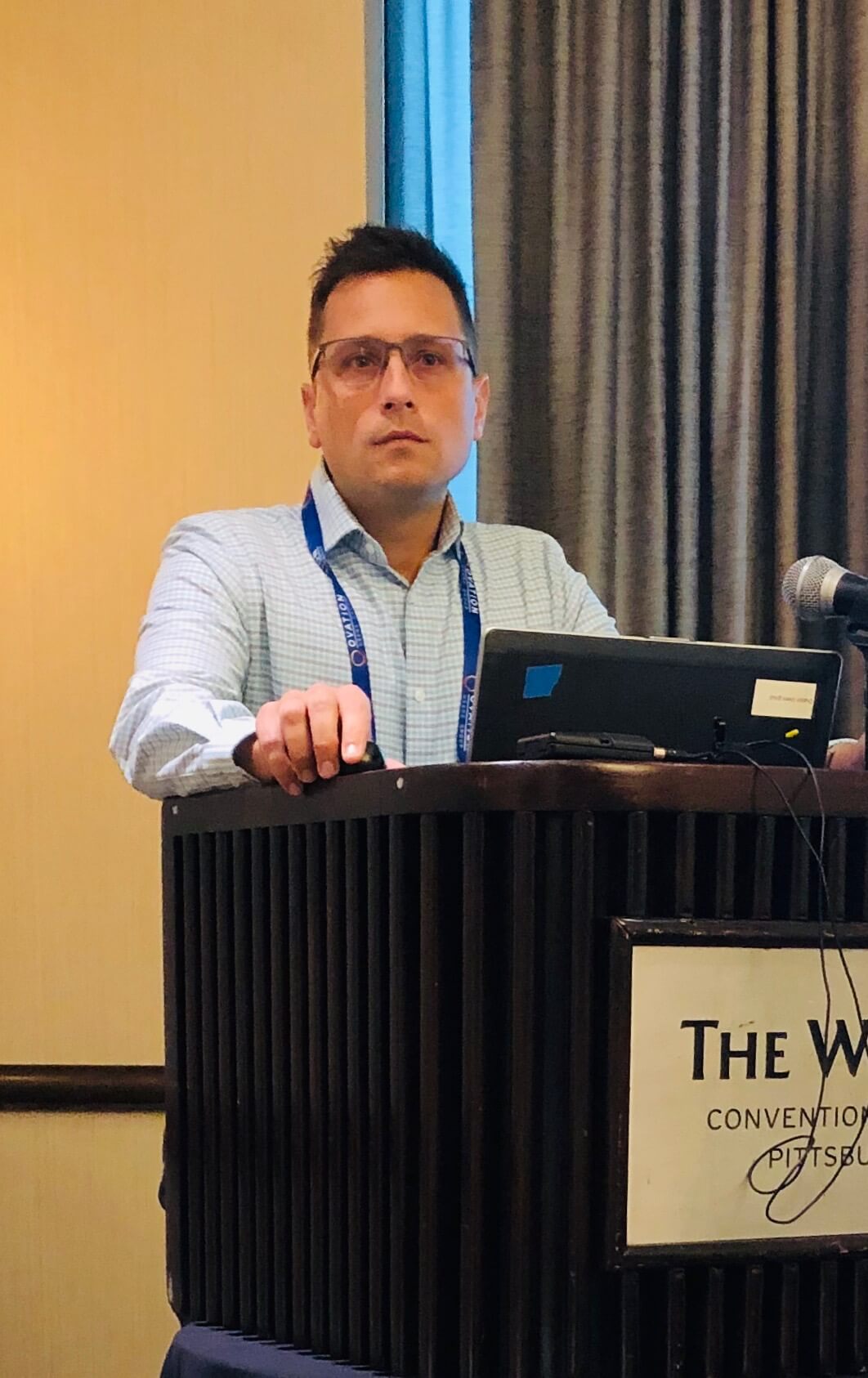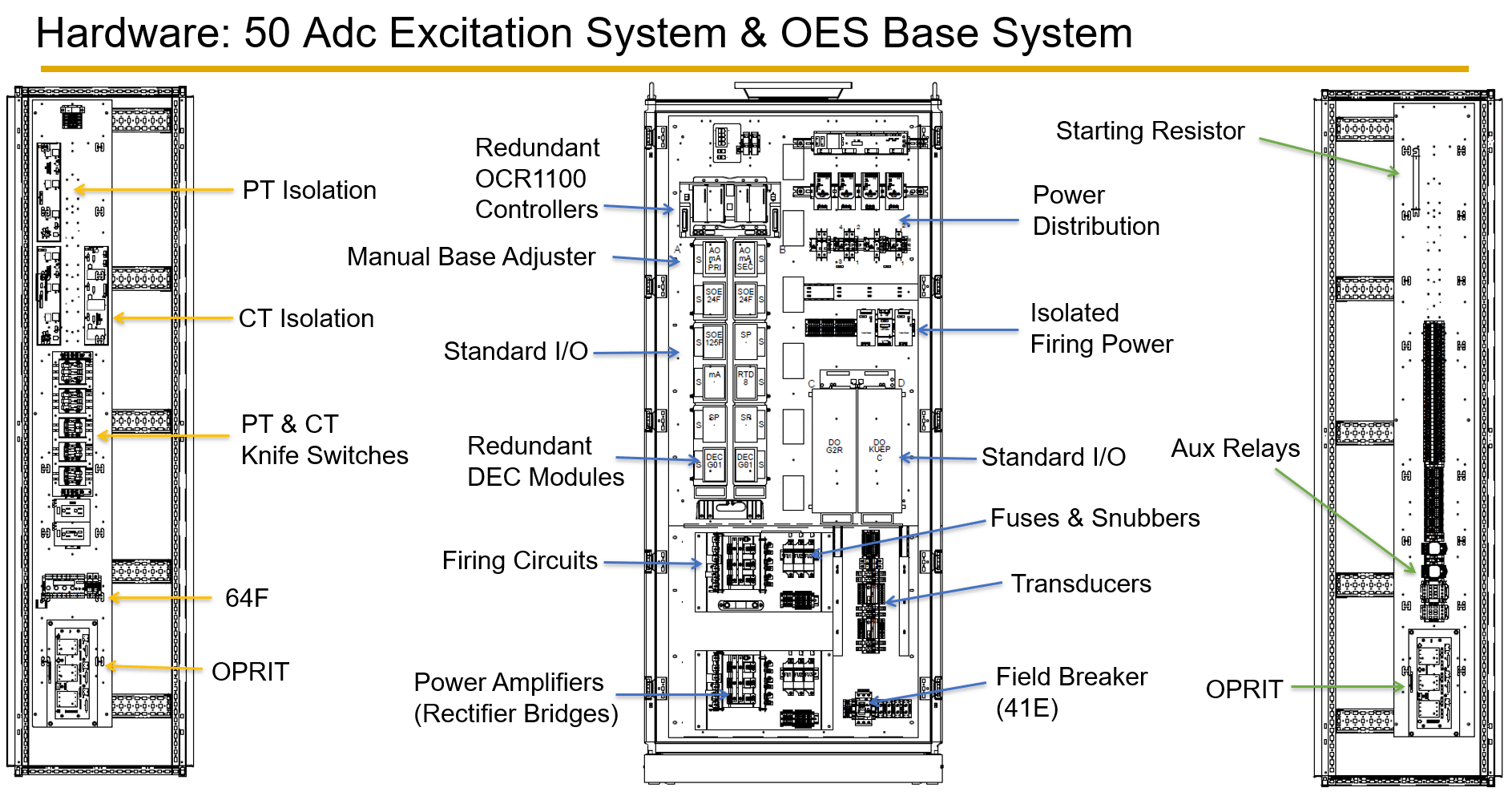 Emerson’s Matt Musko shared the basics and installation best practices for generator excitation controls at the 2019 Ovation Users’ Group conference. Matt opened describing the fundamentals of generator excitation. Three things are necessary to generate electricity: current carrying conductors in the generator armature windings, a magnetic field created by DC current supplied to the field windings, and relative motion between the conductor and magnetic field provided by a rotating turbine and shaft.
Emerson’s Matt Musko shared the basics and installation best practices for generator excitation controls at the 2019 Ovation Users’ Group conference. Matt opened describing the fundamentals of generator excitation. Three things are necessary to generate electricity: current carrying conductors in the generator armature windings, a magnetic field created by DC current supplied to the field windings, and relative motion between the conductor and magnetic field provided by a rotating turbine and shaft.
The magnitude of the voltage produced by the generator is a function of the number of loops of conductor in the armature windings, the speed of rotation, and the strength of the magnetic field produced by DC current that is controlled by the automatic voltage regulator (AVR).
The exciter is the backbone of the generator control system. It is the power source that supplies the dc magnetizing current to the field windings of a synchronous generator. Two types of exciters are rotating (brush or brushless) and static.
Matt described capability curves and over excitation. The generator output is limited by rotor winding limits, stator winding limits. Exciter control uses over-excitation and under-excitation limits to avoid the physical limits of the generator.
The Ovation Digital Excitation Controller Module has 4 Analog Output circuits—1 Controller output for firing demand (4-20 mA); 1 Spare output (4-20 mA); 2 Diagnostic output circuits (+/-10 V), 2 Digital Output circuits, 6 Two three-phase Potential Transformer (PT) inputs, 4 Analog Input circuits (4-20 mA)—3 field current inputs; 1 field voltage input, 3 Current Transformer (CT) input circuits, 2 Digital Input channels (spare), and 1 External +/- 10V test input circuit.
The modes of operation for this excitation controller are Auto Voltage Regulation (AVR), Field Current Regulation (FCR), and Base-Field Current Regulation. In AVR mode (think automatic mode), the operator establishes generator voltage setpoint and the power system stabilizer (PSS) can be turned on. In the other two modes (think manual modes), the operator establishes a field current setpoint and PSS is off.
From an installation best practice perspective, Matt highlighted the importance of collecting all information on walkdown checklist, such as drawings, nameplates, generator data, Ovation backup, etc. during the pre-installation phase. Note any space constraints, inspect field cabling and cable routing, and take pictures and measurements. Create comprehensive installation documentation and a flexible plan, thoroughly reviewed with project team—power producer staff, contractor & Emerson supervisor &field service. Preprint wire labels, cable wraps, and device labels. Finally, preprint all installation documentation and drawings including OEM drawings with markups & Emerson schematics with one “MASTER” set and multiple reference sets for electrical contractors.
In the installation phase, identify devices and panels to retain. When possible, do not lift field wires rather identify/label any wires that must be lifted, such as new control cabinet or new field terminal blocks. Take more pictures before lifting wires/cables. Do not dispose of removed devices until after successful startup. Take “as-installed” pictures of system overview and components as well as live graphic screen shots.
In the site acceptance testing (SAT) phase, check calibrations (PT, CT, transducers, etc.), perform loop checks (I/O check, functional check, alarm check), verify Limiters/Protections, check power supplies, perform firing checks, and test aux protection devices (64F, SEL-587, SEL-300G, diode fault monitor, etc.)
Finally, during the commissioning phase perform pretests on PSS and AVRs, take steady state measurements at full speed with no load, then at low load (10-20%), and then at partial to full load (~60-100%).
Visit the Generator Exciter Controls section on Emerson.com for more on the technologies and services available for optimal generator performance.

